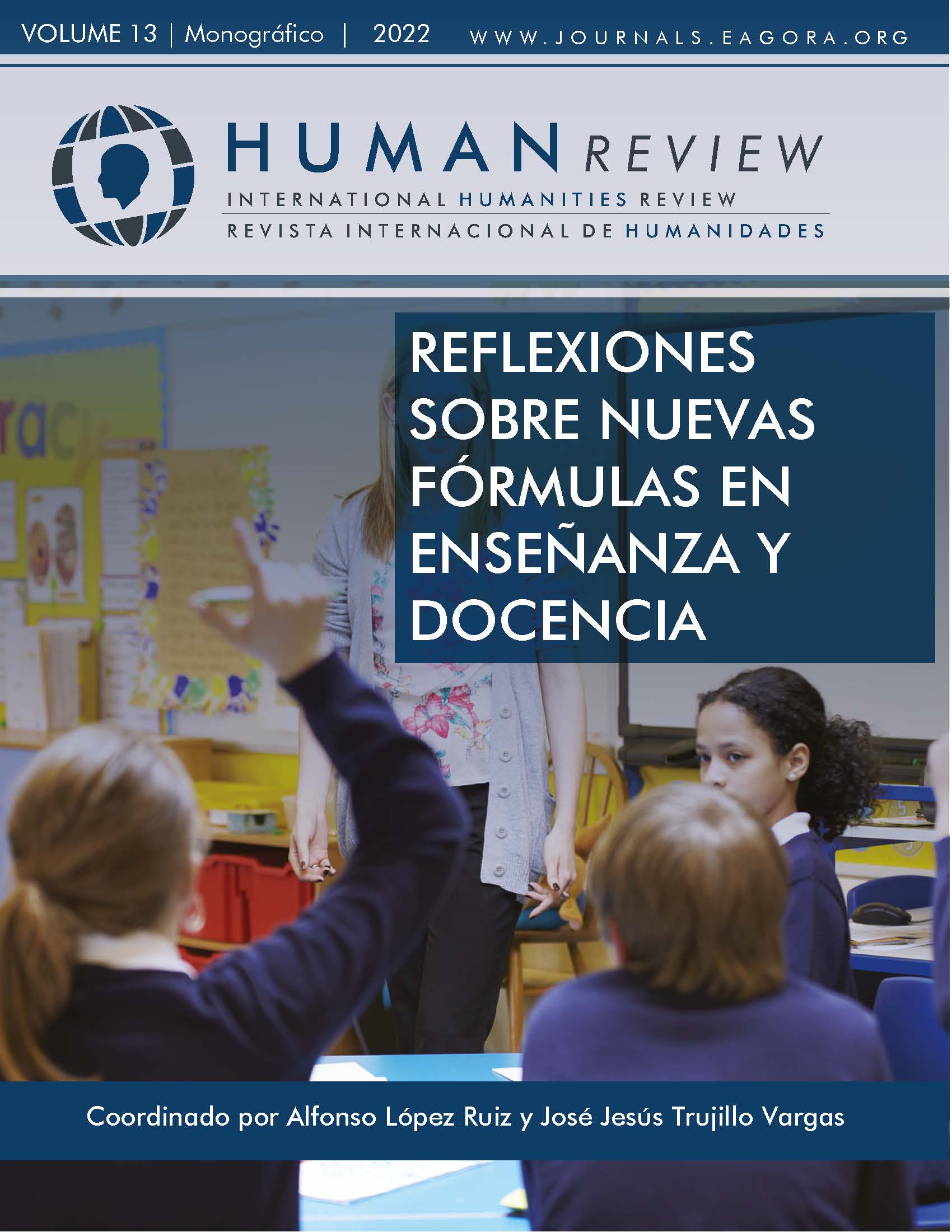Analysis of the human body through drawing
Plastic modelization through observation
DOI:
https://doi.org/10.37467/revhuman.v11.4089Keywords:
Artistic Practices, Drawing Methodologies, Drawing Processes, Human Body, Life Drawing, Plastic modelization, SketchesAbstract
The study of the human body through sketching allows the student of Fine Arts to delve into the complex perceptual, cognitive and procedural processes of drawing, since this practice favors both the analysis of the human body and the assimilation of strategies to assume the deep relationship that is established between the artist and what he/she observes, understands and materializes in the drawing itself. For this reason, this paper analyzes the factors involved in this situation and offers a number of strategies that facilitate the acquisition of the necessary skills for it after implementing an exercise program for this purpose.
References
Álvarez Rodríguez, S. Procesos cognitivos de visualización espacial y aprendizaje. Revista de Investigación en Educación, [S.l.], v. 4, 61-71, ene. 2007. ISSN 2172-3427. Recuperado 19 junio 2022 de https://reined.webs4.uvigo.es/index.php/reined/article/view/35
Baigrie, B. S. (Ed.). (1996). Picturing knowledge: Historical and philosophical problems concerning the use of art in science. University of Toronto Press.
Bernárdez Sanchís, C. (1991). La línea sabia: apuntes sobre algunos momentos de la historia del dibujo. Anales de Historia del Arte, 3, 95 - 116. Recuperado 18 de junio de 2022, de https://revistas.ucm.es/index.php/ANHA/article/view/ANHA9192110095A
Cabezas, L. (coord.) (2011). Dibujo y construcción de la realidad: arquitectura, proyecto, diseño, ingeniería, dibujo técnico. Cátedra.
Clark, K. (2008). El Desnudo: un estudio de la forma ideal. Alianza.
Cubero, M. (2005). Un análisis cultural de los procesos perceptivos. Anuario de Psicología, 36 (3), 261-280. Recuperado 19 de junio de 2022: https://www.redalyc.org/articulo.oa?id=97017406002
Díaz Padilla, R. (2007). El dibujo del natural en la época de la postacademia. Akal.
Florenski, p. (2005). La Perspectiva Invertida. Siruela.
Gómez Molina, J. J., Cabezas, L., Bordes, J. (2001). El manual de Dibujo. Cátedra.
Gómez Molina, J. J., Cabezas, L., Copón, M. (2005). Los nombres del Dibujo. Cátedra.
Ingold, T. (2018) The life of Lines. Routledge.
Moraza, J. L. (2009, 17 marzo). De arte, Saboer (Conferencia). Diálogos de cocina. Eurotoques. San Sebastián, España.
Moraza, J. L. (2015). El inconsciente clásico (en la cultura y el arte contemporáneo). Dioses, héroes y atletas: la imagen del cuerpo en la Grecia antigua, 295-318. Museo Arqueológico Regional.
Ruskin, J. y Ochoa M.L. (1999). Técnicas de dibujo. Laertes.
Temkin, A., & Rose, B. (1993). Thinking is form: The drawings of Joseph Beuys. Philadelphia Museum (PA).
Trachana, A. (2012). Manual o digital. Fundamentos antropológicos del dibujar y construir modelos arquitectónicos. EGA Expresión Gráfica Arquitectónica, 17, 288–297. https://doi.org/10.4995/ega.2012.1381
Downloads
Published
How to Cite
Issue
Section
License
Those authors who publish in this journal accept the following terms:
- Authors will keep the moral right of the work and they will transfer the commercial rights.
- After 1 year from publication, the work shall thereafter be open access online on our website, but will retain copyright.
- In the event that the authors wish to assign an Creative Commons (CC) license, they may request it by writing to publishing@eagora.org









